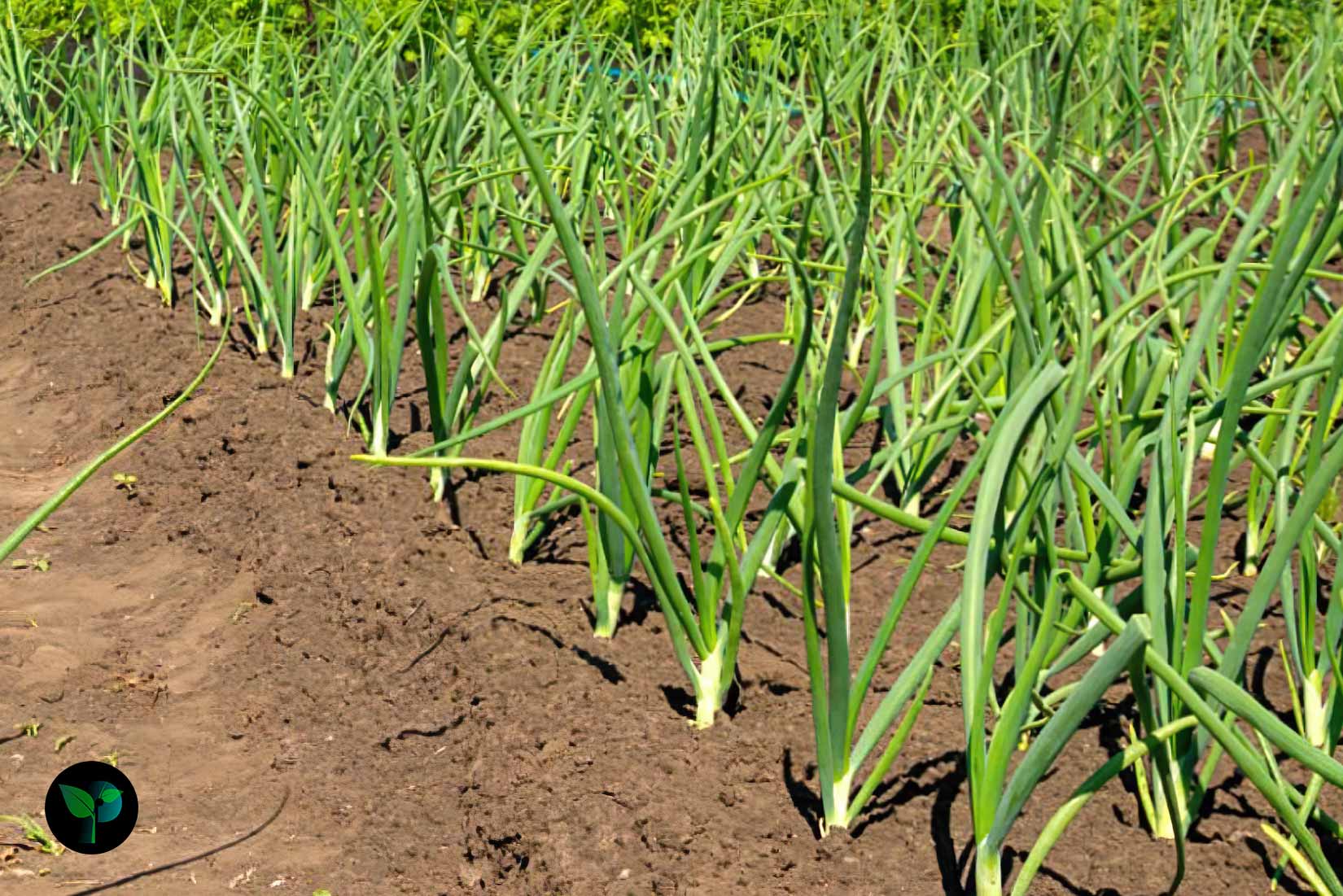In recent years, many studies have been conducted in the field of botany, which shows the great importance of this subject. The impact of plants in our human life is undeniable. Different plants are used in different industries such as food, pharmaceutical, cosmetic and sanitary industries, etc., and are present in almost all aspects of our lives. Therefore, knowing the benefits of each plant, how to use it, and the conditions for not using it is of great importance. In this post from Plants Folder, we will discuss the plant garlic. A plant that you have definitely used it in your cooking.
History and Origin
Garlic, known scientifically as Allium sativum, is a species in the onion genus, Allium. Its unique taste, pungent aroma, and diverse uses make it a staple in culinary traditions around the world, from cuisine enhancement to its health-promoting properties.
It has a rich history that spans thousands of years, permeating the realms of both culinary and medicinal practices. Its origin can be traced back to Central Asia, possibly in the region of modern-day Kyrgyzstan and Tajikistan. From its origins, it was spread through trade and migration to other parts of Asia, the Middle East, and eventually throughout the world. It is native to Central and Western Asia, but is now grown worldwide. Garlic is a perennial plant with underground stems (bulbs), long, narrow leaves that are dark green in color, and small, white flowers. It is a very popular vegetable worldwide due to its pungent flavor and well-known properties.

The ancient Egyptians not only utilized garlic for culinary purposes but also recognized its medicinal attributes. It was a vital component of the diet of laborers who built the pyramids; it was revered for its ability to boost strength and endurance. Additionally, it was used in embalming practices, highlighting its substantial cultural and medical significance.
Benefits of Garlic
Culinary Significance
Garlic is celebrated for its ability to transform a variety of dishes, imparting a distinct flavor and aroma. Whether used in its raw state, minced, or roasted, this plant adds depth and complexity to an array of cuisines, from Italian and Mediterranean to Asian and beyond. Its versatility in enhancing savory dishes, sauces, dressings, and marinades has made it a beloved ingredient across cultures.
Medicinal Properties
Beyond its culinary applications, it has been esteemed for its potential health benefits. The primary bioactive compound in garlic, allicin, is linked to various therapeutic properties. These include:
Cardiovascular Health
Garlic has been associated with potential cardiovascular benefits, such as lowering blood pressure and improving cholesterol levels. Studies suggest that it may aid in reducing the risk of heart disease and stroke.
Antimicrobial and Antioxidant Effects
This plant exhibits antimicrobial properties, which may support the body’s defenses against certain infections. Furthermore, it contains antioxidants that help combat oxidative stress.
Anti-Inflammatory Potential
Some research suggests that it may possess anti-inflammatory effects, which could be beneficial in addressing inflammatory conditions.
Who Should Avoid Garlic
While garlic is generally regarded as safe when consumed in food amounts, there are circumstances where individuals should exercise caution or avoid its use:
Blood-Thinning Medications
Those taking anticoagulant or antiplatelet medications should consult with a healthcare professional before consuming large amounts of this plant, as it may enhance the risk of bleeding.
Pre and Post-Surgical Considerations
Due to its potential effects on blood clotting, those undergoing surgery should inform their healthcare provider about their garlic consumption. For individuals who experience allergic reactions to garlic, such as skin rashes or gastrointestinal discomfort, avoiding its use is advisable. Furthermore, caution is warranted for pregnant and lactating individuals, as well as young children, to ensure appropriate and safe consumption of garlic.
How to Use Garlic
Culinary Applications
In culinary contexts, it can be used in a multitude of ways:
Raw
Finely chopped or minced garlic cloves can enhance the flavors of salads, dressings, and salsas.
Cooked
Sauteing or roasting garlic can yield a mellower and nuttier flavor, suitable for inclusion in soups, stews, and roasted dishes.
Infused Oils and Sauces
Garlic-infused oils and sauces are popular for drizzling over bread, pasta, and vegetables.
Medicinal Preparations
It can also be consumed for its potential health benefits:
Raw Consumption
Raw garlic can be finely minced and incorporated into honey or consumed with food to benefit from its enzymatic and therapeutic properties.
Supplements
Its supplements, available in various forms such as capsules and powders, offer a convenient way to access standardized amounts of garlic’s active compounds.
Precautionary Measures
When using garlic, especially for medicinal purposes, it is crucial to consider the following practices:
Proper Storage
Store it in a cool, dry place to preserve its flavor and potency.
Internal Consumption
Moderation is key when consuming raw garlic due to its pungency and potential gastrointestinal effects.
Topical Applications
its pastes or oils should be used judiciously as excessive application on the skin may lead to irritation for some individuals.
In conclusion, its far-reaching influence spans millennia, enriching culinary traditions and offering a spectrum of potential health benefits. Its historical prominence, diverse applications, and intriguing therapeutic properties position it as a multifaceted culinary and medicinal marvel that continues to captivate and inspire. While its benefits are vast, it is important to approach its use judiciously, with an understanding of its potential impact on individual health and well-being. Whether sautéed in a savory dish or incorporated into a wellness regimen, garlic stands as a testament to the interconnectedness of food, culture, and health across the globe.



Leave a Reply